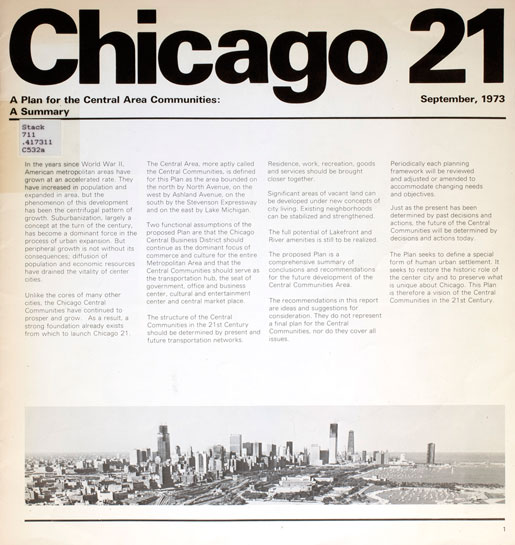01. Chicago 21: Plan for the Central Area Communities, 1973.
Between 1958 and 1973, central Chicago lost 21,000 inhabitants to the suburbs. The "Chicago 21"
plan—named so because it hoped to prepare Chicago for the 21st century—aimed to draw
middle class residents and shoppers back downtown and to neighboring central areas. The plan,
prepared by Skidmore, Owings & Merrill, with the backing of Mayor Richard J. Daley, called for
spending at least $1 billion a year for 15 years. Calling for a combination of urban renewal and
rehabilitation, the plan recommended massive improvements in existing low-income communities,
programs to encourage home ownership, new parks and housing in Pilsen and Chinatown and public
transit-oriented infrastructure development. Significantly, the plan minimized the influence of
the automobile and included no recommendations for new highways or interchanges. Perhaps the most
consequential element of the plan was the proposed "South Loop New Town," designed for 120,000
residents to be located on 600 acres of abandoned railyards between the Loop and the Chicago
River. Much of this land has since been developed as Dearborn Park and the Roosevelt Collection,
which is currently under construction at Roosevelt Road and Wells Street. Other aspects of the
plan which came to fruition include the State Street transit mall (now removed), a new central
library branch, extensions of Columbus and Wacker Drives, and CTA connections to O'Hare.
"Chicago Looks Ahead: 100 Years of Planning, 1909-2009," Case 8, Ryerson & Burnham Libraries, September 29–December 1, 2010

